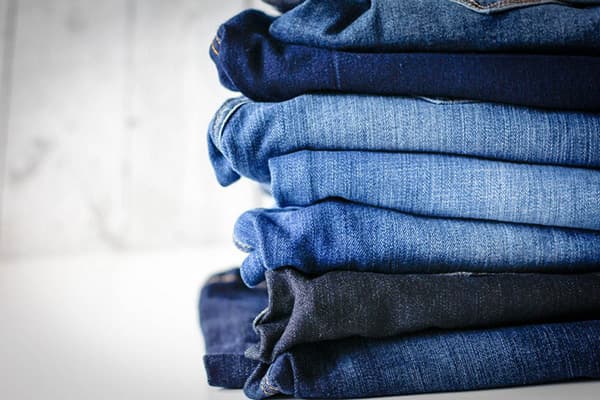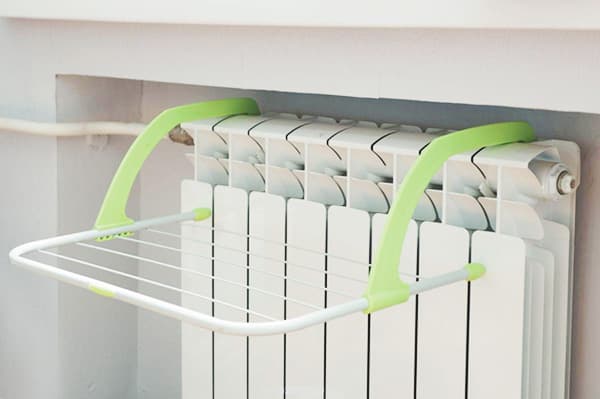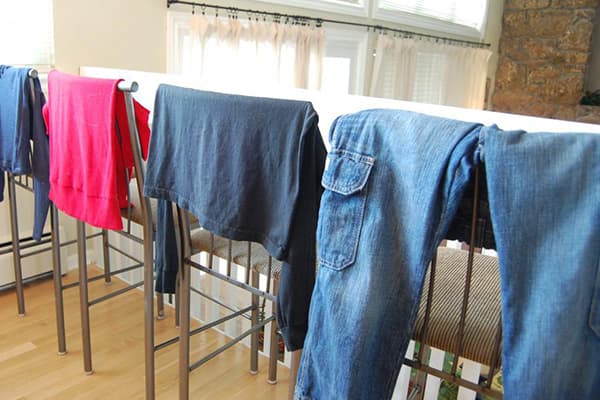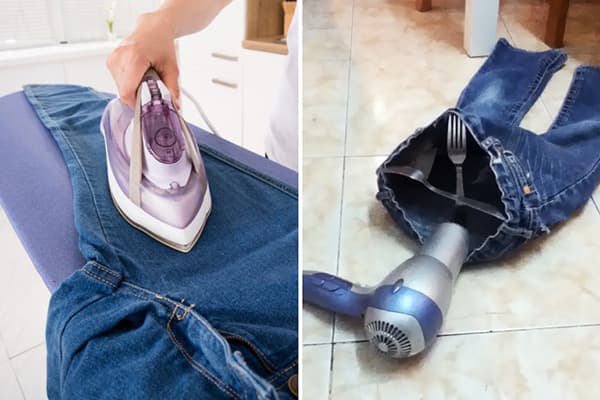Is it possible to dry jeans on a radiator if you urgently need dry pants?
It is believed that it is impossible to dry jeans on a radiator (as well as other forced-hot methods). In most cases, there is no reason to doubt the truth of such a statement, since wet tissue is very sensitive to deformation, and high temperature provokes this very deformation. However, in some cases, jeans can withstand the heat test.

When jeans are different from jeans
If 100 years ago all trousers of this type were made from one fabric (hemp canvas), today the industry has a huge amount of “denim” materials. Therefore, when it comes to how to properly dry jeans, it is important to consider the composition of the fabric from which they are made.
- Cotton in its pure form is becoming increasingly rare. Despite its environmental friendliness, clothing made from 100% cotton has a number of significant disadvantages (for example, it wrinkles easily and does not iron out well, wears out quickly and does not keep its shape). After drying on a radiator, cotton jeans shrink by about 2 sizes. Naturally, not forever - just put them on, and 10-15 minutes later they will return to their previous state. Much worse is that under the influence of high temperature, the special glue with which the fabric is impregnated in production is destroyed, and the fibers begin to become loose.After one emergency drying, nothing will happen to the trousers, but if you practice this constantly, then after the fifth or sixth time their appearance will leave much to be desired.
- Cotton with polyester blend It differs from the previous fabric in practicality and wear resistance. The amount of polyester in the composition most often varies from 8 to 20%. If it is less, it has almost no effect on the physical and mechanical properties of the fabric; if more, it changes them so significantly that it negatively affects the hygienic qualities of the material (including hygroscopicity and breathability). Jeans with a high polyester content can, if necessary, be dried hot on a radiator or in a dryer, but their service life will still be reduced several times.
- Cotton with elastane blend, as a rule, is used for sewing tight-fitting models (such as skinny, slim and jeggings). When exposed to high temperatures, elastane stretches and forever loses its ability to compress, so emergency drying will end badly for the trousers - firstly, they will increase significantly in size, and secondly, unsightly “bubbles” will appear in the knee area. There is no way to fix this.
Responsible manufacturers always include information about acceptable drying methods on the jeans tag. If there is a pictogram in the form of a crossed out square with a circle drawn inside, the product can only withstand drying in the open air. There is a dot in the center of the circle - this means that the trousers can be dried in the machine at a moderate temperature; two dots - it is allowed to use a high-temperature mode (such jeans will not be harmed by drying them on a radiator).
How to dry jeans quickly?
The most reliable method, which does not entail any consequences, is to imitate natural drying, but in a slightly accelerated version. To understand how to carry out such a process, you need to understand how clothes hung on lines dry.
This will come as a surprise to most, but the disappearance of water from the fabric is not associated with high temperatures of the air or nearby objects. The basis for drying laundry is the physical principle of vaporization, which in turn is related to the concept of humidity.
Water absorbed into jeans consists of many small particles - molecules that move continuously and chaotically. When some of them emerge from the thickness of the material to the surface, they are faced with the fact that the environment (that is, the air indoors or outdoors) is less saturated with moisture than the fabric.
Accordingly, the distance between water molecules in the air is smaller, and they move much more easily. Those of them that were on the surface of the jeans “go into open swimming”, mixing with the air, and their place is taken by new ones - those that were previously in the thickness of the fabric, and everything is repeated in reverse. This process is called evaporation and continues until the humidity level of the air and the laundry becomes the same or until all the moisture is removed from the fabric.
Since not only liquids, but also solids can evaporate, clothes can be dried even in the cold, when the water contained in the material crystallizes and turns into ice.
There are several ways to speed up the evaporation process:
- Increase the ambient temperature - for example, turn on the heater.
- To reduce the level of humidity in a room, the easiest way to do this is by opening a window, but this method absolutely does not work in rainy weather and in cities where, due to the proximity to the sea or ocean, the air is always excessively humid.
- Create active air flows - that is, direct a fan to wet jeans or create a draft in the room.
It is not forbidden to combine several methods - for example, use a hairdryer (which, although locally, increases the air temperature, and at the same time also contributes to its rapid movement).
Whether jeans are worth risking if hot drying is contraindicated for them, everyone decides for themselves. But in any case, it is worth remembering that there are many alternative methods - safe and no less effective.



